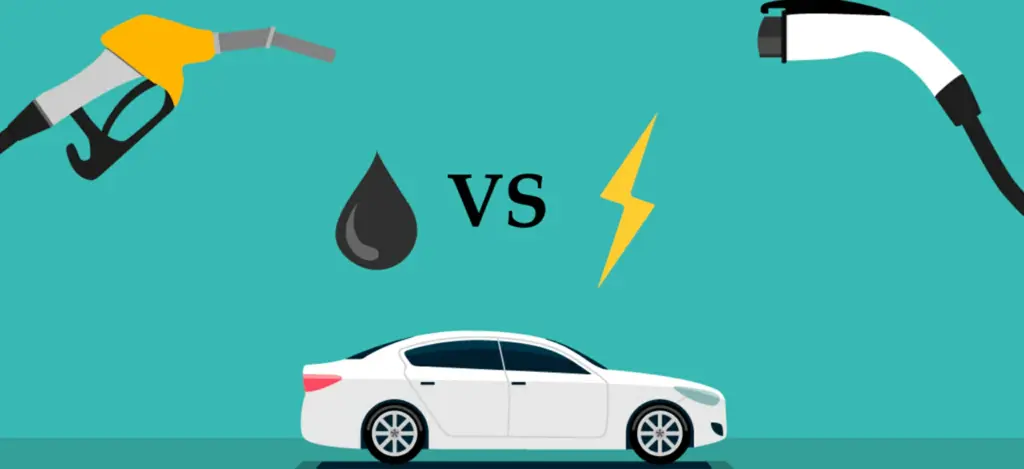What to Expect at Modern fuel stations for electric and hydrogen cars
As zero-emission vehicles rise in popularity, traditional gas stations are evolving into multi‐energy hubs designed to serve fuel stations for electric vehicles (EVs) and hydrogen fuel cell cars.
Drivers today need more than just a pump—they seek rapid charging, safety, clear pricing, and on‐site amenities. This article delves into the features, services, and innovations you’ll encounter at modern fuel stations for electric and hydrogen vehicles, preparing you for a seamless refueling experience.

Charging and refueling infrastructure now coexists under one roof. Whether you drive an EV or a hydrogen‐powered vehicle, understanding station layouts, connector types, payment methods, and safety protocols ensures you can refuel quickly, safely, and with confidence.
Table of Contents
From Fuel Pumps to Multi‐Energy Hubs
Modern fuel stations for electric and hydrogen cars blend:
- DC Fast Chargers: 50 kW to 350 kW units for rapid EV recharging
- Level 2 Chargers: 7–22 kW units for overnight or destination charging
- Hydrogen Dispensers: 350 bar or 700 bar high‐pressure pumps for H₂ refueling
- On-Site Renewables: Solar canopies and wind turbines to offset grid demand
- Battery Storage: Large‐scale batteries smooth peak load during simultaneous charging
These stations often retain a limited number of gasoline or diesel pumps to serve hybrid or legacy vehicles, but the focus is clearly shifting toward sustainable fuels.
Electric Vehicle Charging at fuel stations for electric
DC Fast Charging
- Connector Standards:
- CCS (Combined Charging System): Predominant in North America and Europe
- CHAdeMO: Still common for some Japanese EVs, though declining
- Tesla Superchargers: Proprietary, with adapters available
- Power Levels:
- 50 kW: Suitable for early EVs; adds ~100 miles in 30 minutes
- 150 kW+: Modern EVs (such as Tesla Model 3, EV6) can gain ~200 miles in 20 minutes
- 350 kW: Upcoming ultra‐fast chargers on highways for next‐gen EVs
- Usage Tips:
- Preheat battery via vehicle app in cold weather for optimal charging speed
- Avoid charging above 80% at ultra‐fast stations to reduce cost and battery stress
- Use station reservation systems where available to guarantee a slot
Level 2 Destination Charging
- Ideal for: Shopping centers, workplaces, hotels, and restaurants
- Charging Rate: 7–22 kW adds 20–60 miles per hour of charging
- Access Control:
- RFID cards (e.g., ChargePoint, EVgo)
- Mobile apps with QR codes or NFC tap
- Amenities: While charging, drivers often enjoy on‐site cafes, restrooms, and retail outlets.
Network Integration and Interoperability
- Roaming Agreements: Single‐sign-on access across multiple networks (e.g., EVgo + Electrify America via Hubject)
- Payment Methods:
- Pay-per-kWh or pay-per-minute rates
- Subscription plans for lower per-kWh fees
- Credit/debit cards, mobile wallets, OEM accounts
Clear pricing and transparent billing apps help drivers compare cost per session, cost per mile, and time to charge across different fuel stations for electric networks.
Hydrogen Refueling at Multi‐Energy Stations
Dispenser Technology
- Pressure Levels:
- 350 bar: Common for light‐duty vehicles
- 700 bar: Allows greater driving range per fill
- Refuel Time: Comparable to gasoline—3–5 minutes for a 300+ mile range
- Safety Protocols:
- Automatic leak detection sensors
- Grounding and bonding to dissipate static
- Emergency shutoff valves at nozzle and tank
User Experience
- Pre-Cool Hydrogen: Tanks are chilled to –40 °C to maximize density
- Dry‐Break Nozzles: Prevent hydrogen spills and ensure a tight seal
- Payment & Membership: Similar to EV—RFID cards or station apps linked to accounts
Hydrogen stations remain fewer than EV chargers but are expanding in regions with ambitious fuel cell vehicle programs such as California, Europe’s H₂ Mobility network, and Japan’s hydrogen highways.
Safety Measures and Regulations
Both EV charging and hydrogen refueling demand rigorous safety standards:
- NFPA 855 & UL 2594: Guidelines for EV charging installations, including clear working spaces and ground fault protection
- ISO 19880‐1: International standard for hydrogen refueling stations covering dispenser design, signage, and emergency procedures
- Pressure Relief Devices: Tanks and dispensers have dual relief valves; in extreme heat or overpressure, hydrogen is vented safely upward
- Routine Inspections: Annual certified inspections of charging equipment, high‐pressure lines, and electrical safety mechanisms
Drivers should look for visible certification labels and safety instructions posted at every fuel station for electric or hydrogen hub.
Station Amenities for Enhanced Comfort
Modern stations aim to transform refueling stops into enjoyable breaks:
- Comfort Lounges: Climate‐controlled seating areas with Wi-Fi
- Refreshments and Food Courts: Many stations partner with major brands (Starbucks, Subway)
- Restrooms and Showers: Especially at highway charging plazas for long‐distance travelers
- Retail and Convenience: Convenience stores, grocery pickup lockers, and even coworking pods
Amenities help offset charging time—especially important when waiting 20–30 minutes for a substantial EV charge.
Preparing to Use a Modern fuel station for electric
- Download Relevant Apps: ChargePoint, Electrify America, Shell Recharge, etc.
- Confirm Vehicle Compatibility: Check connector type and maximum charging rate
- Plan Routes with Station Mapping: Use in-car navigation or apps with real-time availability updates
- Carry Adaptors: For CHAdeMO or Tesla owners using CCS/CHAdeMO combo stations
Knowing your vehicle’s charging specifications and pre-registering with networks smooths the process and reduces downtime.
Q&A: Common Driver Questions
- How do I know if a station’s charger will work with my EV?
Check your vehicle’s connector type (CCS, CHAdeMO, Tesla) and maximum DC charging rate, then confirm those specs on the station’s app or signage. - Can I pre-book a charging slot?
Some networks (e.g., Tesla Supercharger V3 pilot sites, Electrify America) offer reservation features; most rely on first-come, first-served. - Are hydrogen stations as safe as EV chargers?
Yes—hydrogen stations follow stringent ISO and local regulations, with leak sensors, automatic shutoffs, and venting systems to handle anomalies safely. - What happens if a charger malfunctions mid-session?
Most apps will automatically stop billing; contact customer support via the station’s in-app feature or posted hotline. You can usually switch to another nearby charger. - How do I pay for charging or refueling?
Use network RFID cards, mobile apps linked to credit cards, or contactless pay-at-pump. Hydrogen stations also support RFID memberships and pay-by-app. - Will charging prices skyrocket due to utility demand charges?
Networks mitigate demand charges via monthly subscriptions or dynamic pricing, but rural or fast‐charging sites may still carry higher rates. - Can I charge my hydrogen vehicle at an electric charger?
No—hydrogen fuel cell vehicles require dedicated H₂ dispensers, not EV chargers. - Do I need to wear protective gear at hydrogen stations?
No—station design handles all safety protocols. Simply follow posted instructions and stay clear of nozzles during fueling.

Q&A: Common Driver Questions
Do I need to wear protective gear at hydrogen stations?
No—station design handles all safety protocols. Simply follow posted instructions and stay clear of nozzles during fueling.
How do I know if a station’s charger will work with my EV?
Check your vehicle’s connector type (CCS, CHAdeMO, Tesla) and maximum DC charging rate, then confirm those specs on the station’s app or signage.
Can I pre-book a charging slot?
Some networks (e.g., Tesla Supercharger V3 pilot sites, Electrify America) offer reservation features; most rely on first-come, first-served.
Are hydrogen stations as safe as EV chargers?
Yes—hydrogen stations follow stringent ISO and local regulations, with leak sensors, automatic shutoffs, and venting systems to handle anomalies safely.
What happens if a charger malfunctions mid-session?
Most apps will automatically stop billing; contact customer support via the station’s in-app feature or posted hotline. You can usually switch to another nearby charger.
How do I pay for charging or refueling?
Use network RFID cards, mobile apps linked to credit cards, or contactless pay-at-pump. Hydrogen stations also support RFID memberships and pay-by-app.
Will charging prices skyrocket due to utility demand charges?
Networks mitigate demand charges via monthly subscriptions or dynamic pricing, but rural or fast‐charging sites may still carry higher rates.
Can I charge my hydrogen vehicle at an electric charger?
No—hydrogen fuel cell vehicles require dedicated H₂ dispensers, not EV chargers.
The Future of fuel stations for electric and Hydrogen
- Interoperable Hubs: Unified payment and access across EV, hydrogen, and biofuel dispensers
- Bidirectional Charging (V2G): EVs feeding energy back to the grid during peak demand
- On-Site Renewable Generation: Solar canopies directly powering chargers and electrolyzers for green hydrogen
- Automated Payment and Robotics: Robotic arms handling nozzles for hands-free refueling/charging
These innovations will further streamline the experience and drive adoption of zero-emission vehicles.
Modern fuel stations for electric and hydrogen cars balance cutting-edge infrastructure with user-centric amenities. By understanding connector types, safety standards, payment methods, and on-site services, drivers can refuel quickly, safely, and comfortably. As networks expand and technology advances, these stations will become as ubiquitous as today’s gas pumps—welcoming all drivers into the era of sustainable mobility.
Sources and Inspirations:
Insights drawn from ISO 19880-1, NFPA 855, SAE technical papers, Hydrogen Council roadmaps, ChargePoint and Electrify America network data, and automaker documentation from Toyota, Hyundai, and Tesla.